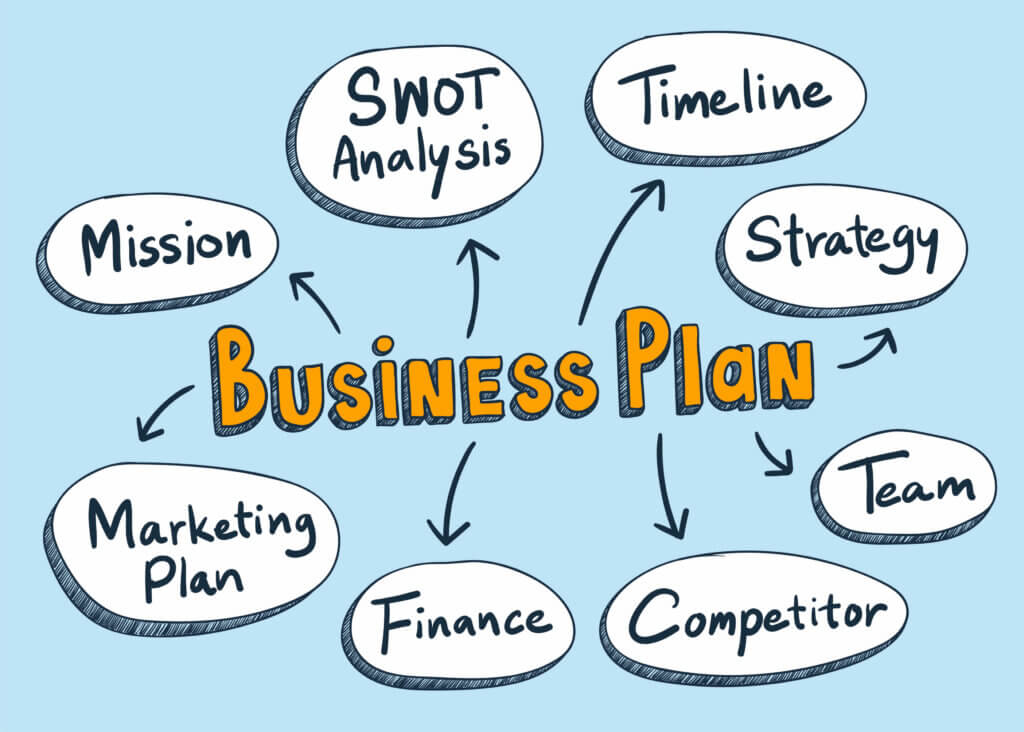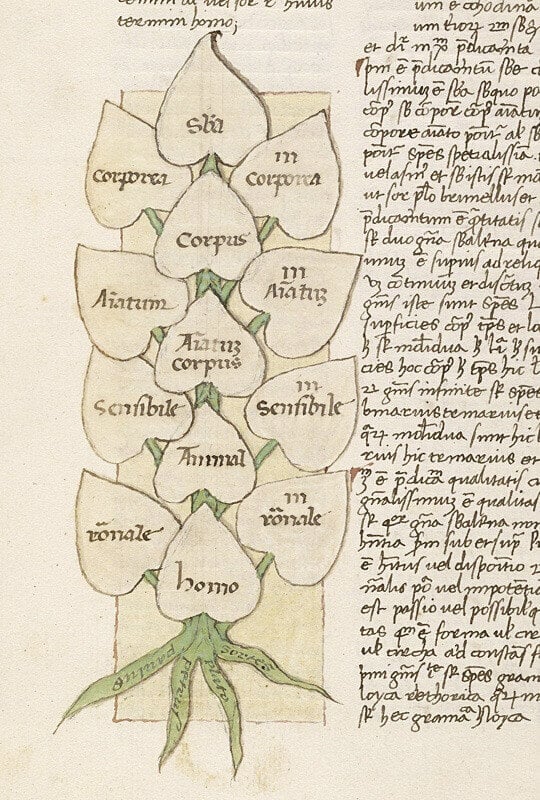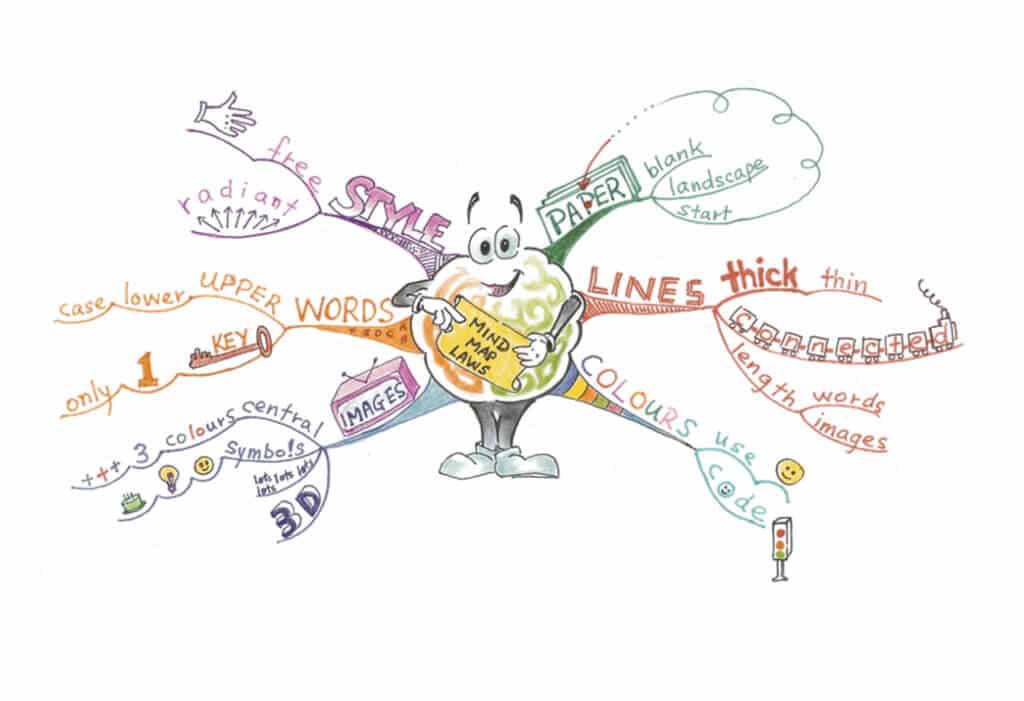Mind Map: The Ultimate Guide to Mind Mapping
Mind maps are a simple and useful tool to use if you’re looking for a method to help with information recall. In this guide, we will go over everything you need...
Mind maps are a simple and useful tool to use if you’re looking for a method to help with information recall. In this guide, we will go over everything you need to know about mind maps.
Before you get started, check out these other articles on productivity methods that we’re sure you’ll find useful!
What is a Mind Map?
A mind map is a visual information management tool that displays links and relationships between related concepts. It is a way of thinking and helps to structure and organize your thoughts.

Usually, the main topic is noted down in the middle of the mind map. Sub pointers that contain information related to this idea would then branch out from the center as the topic is being explored more.
This means that mind maps have a hierarchical order of information management starting from the core idea of the mind map at the center, with branches branching out from it to further expand on the topic. Mind maps coincide with the second brain movement which aims to improve our memory.
Mind maps are a popular tool that helps people visualize their ideas to develop a better understanding of complex concepts. It is especially effective in breaking down larger ideas into smaller pieces.
The History of Mind Maps
Mind maps started to get famous after Tony Buzan, a psychologist, coined the term in 1974. There have been records of similar techniques used by the likes of Aristotle, Picasso, and more. However, Buzan is more widely known as the person who made mind mapping as widely known as it is today.
Humans have been using tools to help us display information visually for a long time even before Buzan made mind mapping popular. Some of the earliest recorded instances of mind mapping date back to Porphyry of Tyros during the 3rd Century. Tyros used the tool to visually organize Aristotle’s work, which later became known as the Porphyrian tree(1). Porphyry’s work was so successful in organizing Aristotle’s complex idea that it was adapted to other languages and studied.

Porphyrian tree image from: upennmanuscripts.tumblr.com
The Buzan Method is the most common way of forming mind maps. This method involves starting the process with the main topic, with branches being added over time to help show the hierarchy of information.
When drawing mind maps to connect concepts, Buzan adds bright colors to show concepts that are related to each other. What this does is that it visually helps you to see concepts that are related to each other. This is useful especially when the main idea that you’re brainstorming has several branches of information.
Modern-day productivity tools now give you the ability to create mind maps digitally, meaning that you can whip out your favorite device and start your brainstorming session. If you’re interested to check out Taskade’s free mind-mapping feature, try Taskade for free today!
What Are the Benefits of Mind Mapping?
When done correctly, there are several benefits that come with mind mapping. Unlike the ancient Greeks, It’s so easy to get started! You simply need a medium to document your thoughts and you’ll be up and running. Here are some of the benefits that come with proper mind mapping practices.
Better information retention. One of the best benefits of mind mapping is that it helps you retain information better. Visually connecting concepts helps your brain to remember ideas better through association.
Increases your creativity. By writing down your thoughts onto a mind map, you get the opportunity to note down your flow of ideas as they come by. This gives you the chance to “empty out your head when inspiration strikes”.(2)
Breaks down complex ideas. Mind mapping helps you break down big complex ideas into a sum of their smaller parts. This approach enables you to digest ideas and develop a better understanding of the main topic.
Helps you to collaborate effectively. Collaborating with others on mind maps can help you create better mind maps. It lets you visually see your team member’s ideas and align everyone via the mind map.
One of the key reasons why mind mapping is effective is because it works similarly to the method of loci. Loci is a visualization technique that involves creating images mentally to enable people to remember more information.
Research has shown that diagrams and maps allow the brain to store information more effectively(3). Mind maps take this method and express your ideas and thoughts physically or digitally on a piece of paper or a screen.
What Can Mind Maps Be Used For?
There are a lot of things that you can use mind maps for and to be honest, the possibilities are endless. Mind maps are frequently used as a means to establish connections between the main topic and its related concepts. This can help with memory retention.
Additionally, mind maps can also help you look for more ideas and inspiration when used during brainstorming sessions.
Mind Mapping For Work
Mind maps can be used at work to help you organize your thoughts or even as a preamble before starting a large project. By drawing out and connecting your ideas, you’ll be able to see how your ideas connect to each other before starting your work.
If you’re looking for inspiration, using mind maps to brainstorm ideas with your team is one of the methods that you can consider to get some creative juices flowing.
Mind Mapping for Students and Learning
Learning new concepts can often prove to be challenging, especially when you’re trying to cram as much information as possible when studying. Listing down information within a mind map can help you to break down complex ideas and theories into manageable subbranches.
You will also be able to see how your ideas connect to each other. This gives you a better understanding of the concept that you’re trying to learn.
Be sure to color-code your mind maps so that you can easily differentiate between concepts.
How to Create a Mind Map
Creating a mind map using Buzan’s method is simple! Here’s how:
Write down the main concept in the center of the mind map.
Branch out from the center of the mind map as you note down more relevant sub-topics.
Explore more ideas and expand on your mind map.
Connect relevant ideas with arrows. Color-code your arrows to group them together.
Zoom out and see how your main concept is actually a sum of all its parts!
(optional) Use our free AI mind map generator!

Image from tonybuzan.edu
It’s best to create your mind maps with a big sheet of paper so that you can expand on them without limits. Be sure to put aside some bright and different colored pens and pencils so that you can effectively color-code your ideas.
If you’re digitally savvy, use Taskade’s mind map view to start on your mind mapping journey! It’s completely free to use, and different views on Taskade mean that you can write down your ideas in a list view first before switching to a mind map view to help you visualize your ideas.
Mind Mapping Best Practices
Creating mind maps can be a fun and useful way for you to organize your thoughts. Here are some tips to make sure that your mind maps are as effective as they can be!
Use arrows to show how concepts connect to each other.
Color-code your mind map to group related ideas together.
Make sure that the key concepts are clearly visible.
Make sure that your mind map is branching out from the main topic.
Keep texts short within your mind map. Less is more!
Make sure that you have enough space to extend your mind map.
Speed up your mind mapping workflows with Taskade AI! 🤖
🤖 Custom AI Agents: Deploy teams of AI agents to dynamically create and adjust mind maps using custom commands and knowledge.
🪄 AI Generator: Expand on mind map nodes, automatically generating related ideas, questions, and concepts that enrich your topic exploration.
✏️ AI Assistant: Organize thoughts, develop and prioritize ideas within your mind maps, and make mind mapping workflows faster and smarter.
🗂️ AI Prompt Templates Library: Access a variety of AI prompt templates designed for personal and business mind mapping scenarios.
💬 AI Chat: Engage in collaborative mind mapping sessions, bounce ideas off the AI, refine concepts, and explore new directions.
📄 Media Q&A: Analyze documents and spreadsheets to identify key concepts and term them into mind maps in an instant.
And much more...
Frequently Asked Questions About Mind Mapping
Mind maps vs flowcharts?
The main difference between mind maps and flowcharts is that mind maps flow from a central idea and branch out to its related subtopics. Mind maps are also usually color-coded, with arrows to show how ideas connect with each other. Flowcharts however are usually used to represent a step-by-step process in problem-solving.
Mind maps vs concept maps?
Mind maps represent your information visually while focusing on one key topic. Concept maps are usually used to connect multiple ideas together while having a tree-like structure, as compared to a mind map’s circular structure.
How do you mind map notes?
You can create a mind map using a blank sheet of paper or dedicated mind mapping software. While both approaches have their merits and limitations, the recipe for a mind map is universal. Here's how to create your mind map in four steps:
1. 🌟 Place your problem, idea, or concept in the center.
2. ⏰ Set the timer and start adding more ideas related to the central theme.
3. ➕ Create a second layer by branching off from existing ideas.
4. 🔄 Rinse and repeat!
Does mind mapping help memory?
Mind maps can benefit your memory retention rate as it helps you to visualize information in the form of images, branches, and colors. This helps your brain to better encode this information into your memory.
What are the best mind map tools?
There are plenty of tools out there that can help you to create mind maps such as Taskade, Whimsical, and Miro. However, Taskade stands out from other tools because in addition to creating mind maps, it also allows you to take notes, create outlines, build to-do lists, and collaborate on group projects.
Are there mind map tools for free?
Yes, there are mind map tools available that offer free subscriptions such as Coggle, GitMind, and MindMeister. Taskade is also free and provides a wide range of functionality in addition to mind mapping.
What can mind maps be used for?
Mind maps can be beneficial for everyday tasks as they can be used to organize, brainstorm, and solve complex problems. You can also use mind maps to display ideas linking to a key concept to help you with memorizing information.
Are mind maps good for learning?
Mind maps are good for learning as you can use it to break down and visualize complex concepts as a sum of their parts. Color-coding your mind maps help you to differentiate between related topic clusters.
What 3 things must a mind map have?
A mind map must have one key concept, ideas branching out from the main concept, and arrows to link related concepts together. You should also use bright colors to group related concepts together.
What are the benefits of mind mapping?
Some of the benefits of mind mapping include: Increased memory retention, better flow of creativity, easily digest complex information, better collaboration with team members, and also to help organize and structure your thoughts.
What are the disadvantages of mind mapping?
Some of the disadvantages of mind mapping include: Limited by space on paper, contains vague information, cannot expand on topics in detail, and it only provides snapshots of concepts.
What does a mind map include?
Mind maps usually include the main concept in the middle. Sub-branches containing related ideas will branch out from the center, and are connected by color-coded arrows to show flow of thought.
🔗 Resources
Davies, M. (2011). Concept mapping, mind mapping and argument mapping: what are the differences and do they matter? Higher Education, 62, 279-301.
